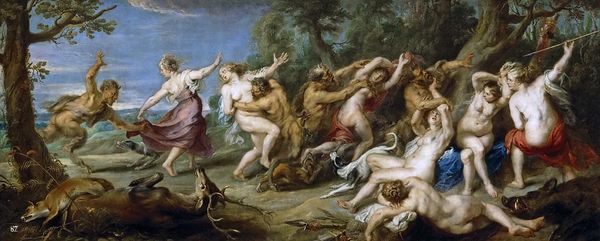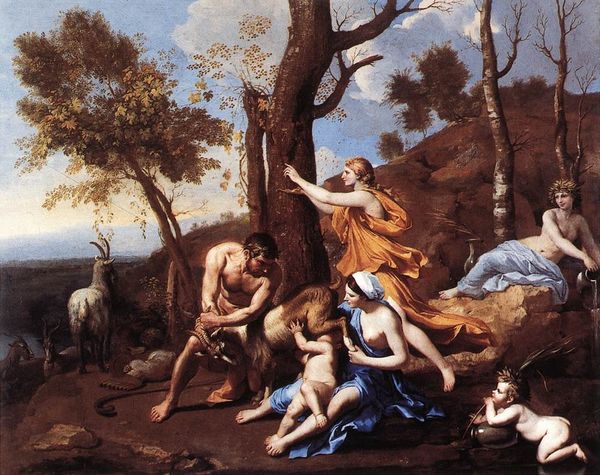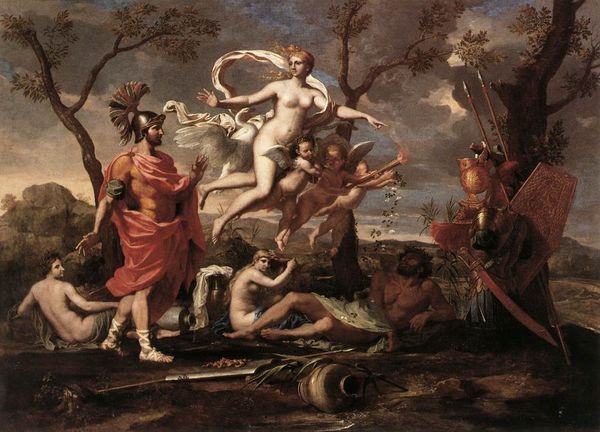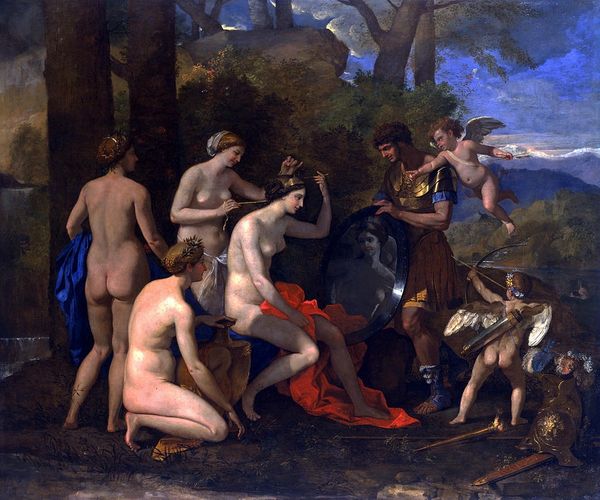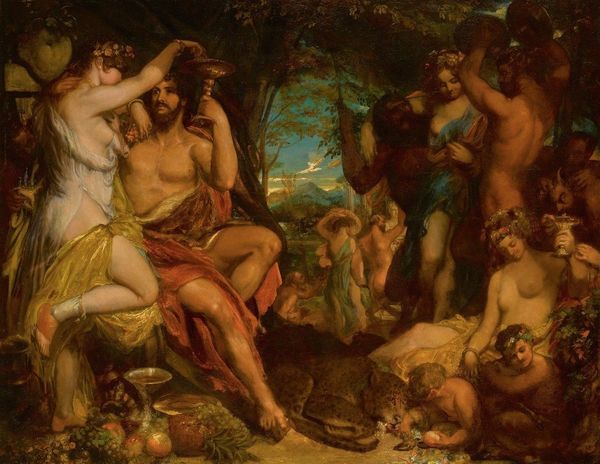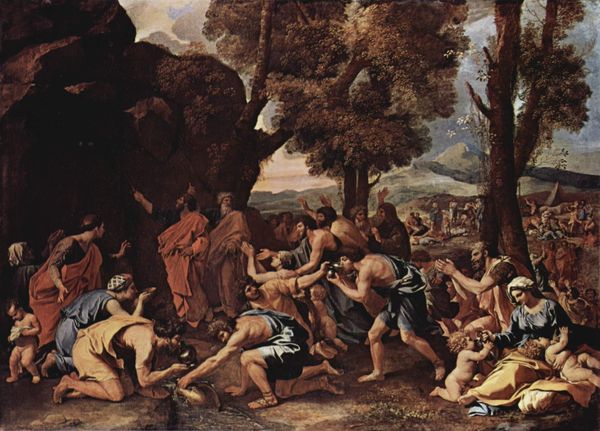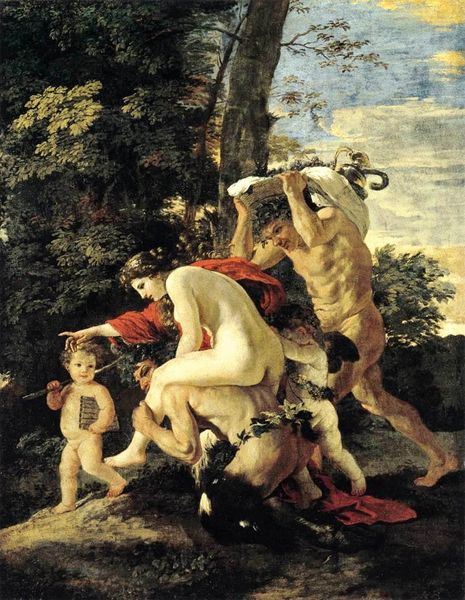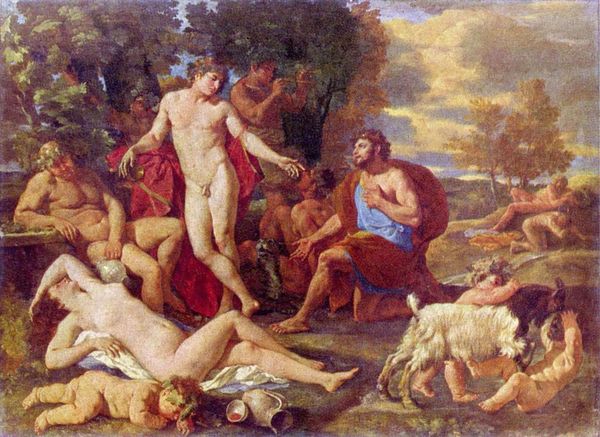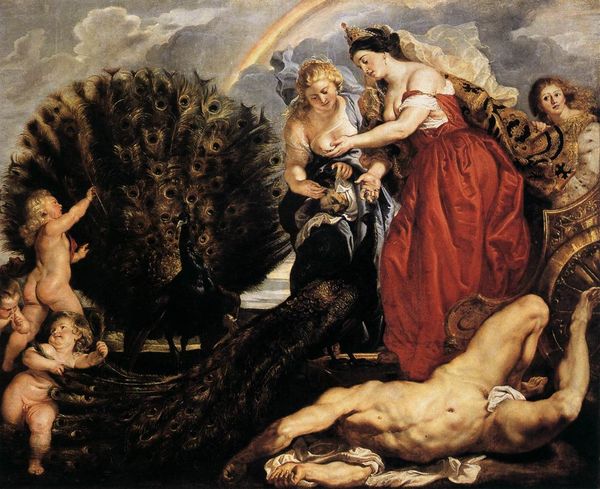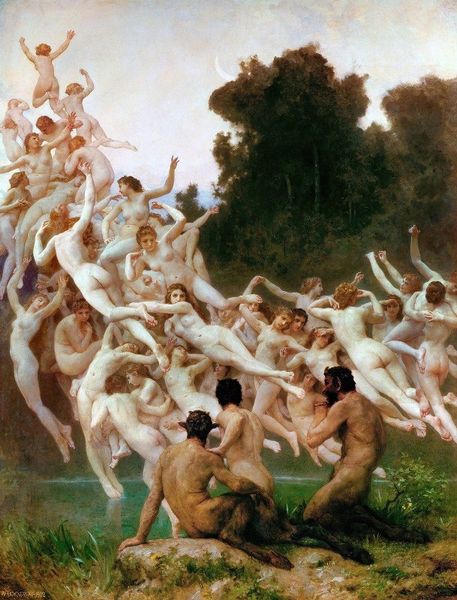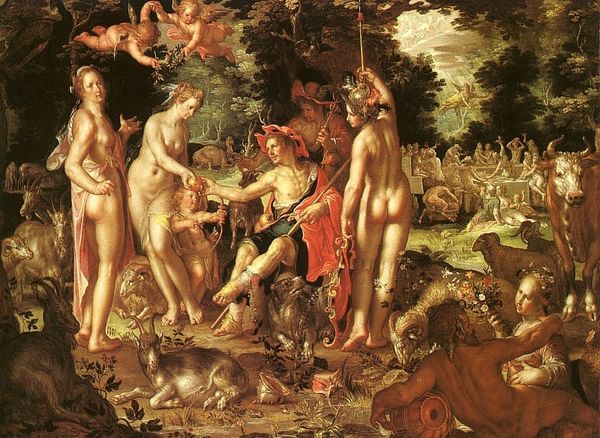
oil-paint
#
allegory
#
baroque
#
oil-paint
#
oil painting
#
roman-mythology
#
mythology
#
history-painting
#
nude
Dimensions: 114.5 x 146.6 cm
Copyright: Public domain
Curator: Nicolas Poussin's "Triumph of Neptune," dating from 1634, presents quite a boisterous scene, doesn’t it? Painted with oils, its canvas bursts with classical energy, currently residing at the Philadelphia Museum of Art. Editor: Indeed. My first impression is one of dynamic imbalance. Figures swirl about with little coherent direction; their energy feels rather scattered and…almost anxious. Curator: Poussin masterfully uses the visual language of Baroque to convey allegorical and mythological content. Neptune's triumph is not just a celebration but, perhaps, a comment on earthly pleasure and its transience. Look closely at the symbolism embedded within the god of the sea and his entourage. Editor: While I appreciate the narrative context, I can’t ignore the discordant palette. Note how the figures, seemingly illuminated from within, cast little discernible shadow; this further disrupts any sense of spatial harmony. What could he be subtly telling us? Curator: Observe how Neptune’s iconography ties back to long held Roman tradition. From Horace to Virgil, water deities controlled civilization. So, the triumphal procession acts as a signifier of established authority in a chaotic world. Consider it as a cultural cornerstone visualized through color and character! Editor: I understand. Though these classical figures convey their historical context, the artist's application distracts my analysis, the painting appears visually and symbolically fragmented; that being said, the application is somewhat of its charm. Curator: A fragmented, chaotic world indeed—represented through historical symbol! What else should we anticipate? Editor: Perhaps the fractured quality is not accidental but rather indicative of the inherent tensions and instability, ever present, that define Poussin's worldview. This informs his entire composition. Curator: Maybe Poussin intended for our contemporary viewing to feel this very specific disquiet, reminding us of civilization's inherent struggles! The work becomes a conduit into both art and history… quite something when put into context! Editor: Ultimately, its appeal is this unresolved state. It invites reflection through its aesthetic tension.
Comments
No comments
Be the first to comment and join the conversation on the ultimate creative platform.
